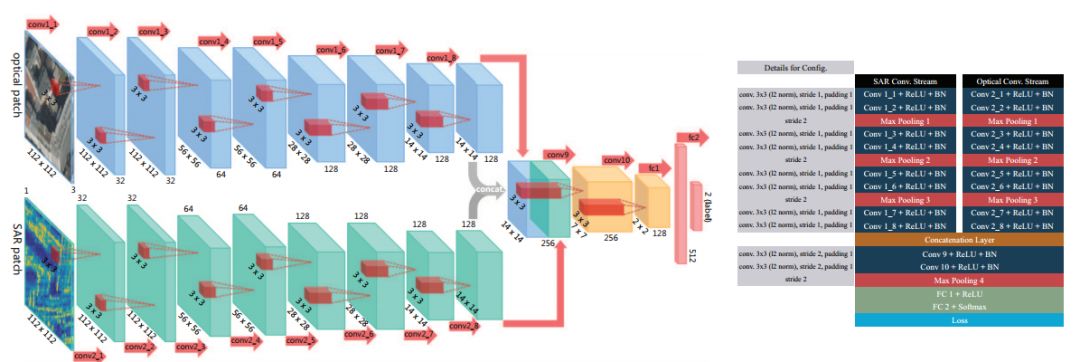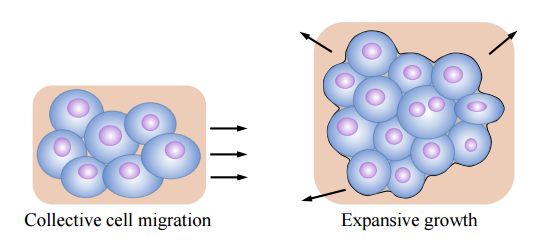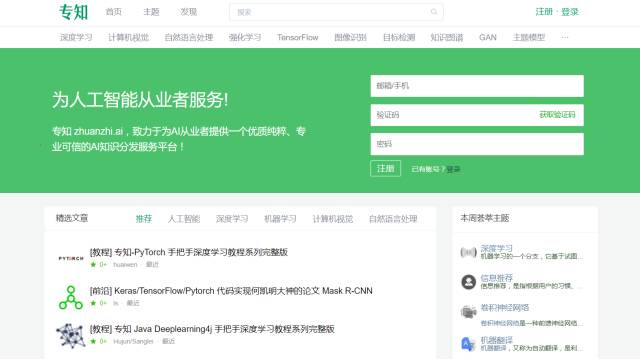【论文推荐】最新6篇卷积神经网络相关论文—多任务学习、SAR和光学图像、动态加权排列、去雾新方法、点CNN、肿瘤生长预测
【导读】专知内容组整理了最近六篇卷积神经网络(CNN)相关文章,为大家进行介绍,欢迎查看!
1. NDDR-CNN: Layer-wise Feature Fusing in Multi-Task CNN by Neural Discriminative Dimensionality Reduction(NDDR-CNN: 多任务CNN中基于神经判别降维的分层特征融合方法)
作者:Yuan Gao,Qi She,Jiayi Ma,Mingbo Zhao,Wei Liu,Alan L. Yuille
摘要:State-of-the-art Convolutional Neural Network (CNN) benefits a lot from multi-task learning (MTL), which learns multiple related tasks simultaneously to obtain shared or mutually related representations for different tasks. The most widely-used MTL CNN structure is based on an empirical or heuristic split on a specific layer (e.g., the last convolutional layer) to minimize different task-specific losses. However, this heuristic sharing/splitting strategy may be harmful to the final performance of one or multiple tasks. In this paper, we propose a novel CNN structure for MTL, which enables automatic feature fusing at every layer. Specifically, we first concatenate features from different tasks according to their channel dimension, and then formulate the feature fusing problem as discriminative dimensionality reduction. We show that this discriminative dimensionality reduction can be done by 1x1 Convolution, Batch Normalization, and Weight Decay in one CNN, which we refer to as Neural Discriminative Dimensionality Reduction (NDDR). We perform ablation analysis in details for different configurations in training the network. The experiments carried out on different network structures and different task sets demonstrate the promising performance and desirable generalizability of our proposed method.
期刊:arXiv, 2018年1月25日
网址:
http://www.zhuanzhi.ai/document/ac9ce4f9dcc5ce8b0324145a84ef15ba
2. Identifying Corresponding Patches in SAR and Optical Images with a Pseudo-Siamese CNN(基于伪暹罗卷积网络的SAR和光学图像中的相应块识别)
作者:Lloyd H. Hughes,Michael Schmitt,Lichao Mou,Yuanyuan Wang,Xiao Xiang Zhu
摘要:In this letter, we propose a pseudo-siamese convolutional neural network (CNN) architecture that enables to solve the task of identifying corresponding patches in very-high-resolution (VHR) optical and synthetic aperture radar (SAR) remote sensing imagery. Using eight convolutional layers each in two parallel network streams, a fully connected layer for the fusion of the features learned in each stream, and a loss function based on binary cross-entropy, we achieve a one-hot indication if two patches correspond or not. The network is trained and tested on an automatically generated dataset that is based on a deterministic alignment of SAR and optical imagery via previously reconstructed and subsequently co-registered 3D point clouds. The satellite images, from which the patches comprising our dataset are extracted, show a complex urban scene containing many elevated objects (i.e. buildings), thus providing one of the most difficult experimental environments. The achieved results show that the network is able to predict corresponding patches with high accuracy, thus indicating great potential for further development towards a generalized multi-sensor key-point matching procedure. Index Terms-synthetic aperture radar (SAR), optical imagery, data fusion, deep learning, convolutional neural networks (CNN), image matching, deep matching
期刊:arXiv, 2018年1月26日
网址:
http://www.zhuanzhi.ai/document/b4f33a58cb8ccc9d7157f62970a14a3d
3. Dynamic Weight Alignment for Convolutional Neural Networks(卷积神经网络的动态加权排列)
作者:Brian Kenji Iwana,Seiichi Uchida
摘要:In this paper, we propose a method of improving Convolutional Neural Networks (CNN) by determining the optimal alignment of weights and inputs using dynamic programming. Conventional CNNs convolve learnable shared weights, or filters, across the input data. The filters use a linear matching of weights to inputs using an inner product between the filter and a window of the input. However, it is possible that there exists a more optimal alignment of weights. Thus, we propose the use of Dynamic Time Warping (DTW) to dynamically align the weights to optimized input elements. This dynamic alignment is useful for time series recognition due to the complexities of temporal relations and temporal distortions. We demonstrate the effectiveness of the proposed architecture on the Unipen online handwritten digit and character datasets, the UCI Spoken Arabic Digit dataset, and the UCI Activities of Daily Life dataset.
期刊:arXiv, 2018年1月25日
网址:
http://www.zhuanzhi.ai/document/b835abdf28c079ed01925dbd855f36c7
4. C2MSNet: A Novel approach for single image haze removal( C2MSNet:一种用于单幅图像的去雾新方法)
作者:Akshay Dudhane,Subrahmanyam Murala
摘要:Degradation of image quality due to the presence of haze is a very common phenomenon. Existing DehazeNet [3], MSCNN [11] tackled the drawbacks of hand crafted haze relevant features. However, these methods have the problem of color distortion in gloomy (poor illumination) environment. In this paper, a cardinal (red, green and blue) color fusion network for single image haze removal is proposed. In first stage, network fusses color information present in hazy images and generates multi-channel depth maps. The second stage estimates the scene transmission map from generated dark channels using multi channel multi scale convolutional neural network (McMs-CNN) to recover the original scene. To train the proposed network, we have used two standard datasets namely: ImageNet [5] and D-HAZY [1]. Performance evaluation of the proposed approach has been carried out using structural similarity index (SSIM), mean square error (MSE) and peak signal to noise ratio (PSNR). Performance analysis shows that the proposed approach outperforms the existing state-of-the-art methods for single image dehazing.
期刊:arXiv, 2018年1月25日
网址:
http://www.zhuanzhi.ai/document/98234c2bc2fc70c3792e997c60950186
5. PointCNN(点CNN)
作者:Yangyan Li,Rui Bu,Mingchao Sun,Baoquan Chen
摘要:We present a simple and general framework for feature learning from point cloud. The key to the success of CNNs is the convolution operator that is capable of leveraging spatially-local correlation in data represented densely in grids (e.g. images). However, point cloud are irregular and unordered, thus a direct convolving of kernels against the features associated with the points will result in deserting the shape information while being variant to the orders. To address these problems, we propose to learn a X-transformation from the input points, and then use it to simultaneously weight the input features associated with the points and permute them into latent potentially canonical order, before the element-wise product and sum operations are applied. The proposed method is a generalization of typical CNNs into learning features from point cloud, thus we call it PointCNN. Experiments show that PointCNN achieves on par or better performance than state-of-the-art methods on multiple challenging benchmark datasets and tasks.
期刊:arXiv, 2018年1月25日
网址:
http://www.zhuanzhi.ai/document/dabafe21a3fffa48ecd949bec481429a
6. Convolutional Invasion and Expansion Networks for Tumor Growth Prediction(肿瘤生长预测的卷积入侵和扩展网络)
作者:Ling Zhang,Le Lu,Ronald M. Summers,Electron Kebebew,Jianhua Yao
摘要:Tumor growth is associated with cell invasion and mass-effect, which are traditionally formulated by mathematical models, namely reaction-diffusion equations and biomechanics. Such models can be personalized based on clinical measurements to build the predictive models for tumor growth. In this paper, we investigate the possibility of using deep convolutional neural networks (ConvNets) to directly represent and learn the cell invasion and mass-effect, and to predict the subsequent involvement regions of a tumor. The invasion network learns the cell invasion from information related to metabolic rate, cell density and tumor boundary derived from multimodal imaging data. The expansion network models the mass-effect from the growing motion of tumor mass. We also study different architectures that fuse the invasion and expansion networks, in order to exploit the inherent correlations among them. Our network can easily be trained on population data and personalized to a target patient, unlike most previous mathematical modeling methods that fail to incorporate population data. Quantitative experiments on a pancreatic tumor data set show that the proposed method substantially outperforms a state-of-the-art mathematical model-based approach in both accuracy and efficiency, and that the information captured by each of the two subnetworks are complementary.
期刊:arXiv, 2018年1月26日
网址:
http://www.zhuanzhi.ai/document/5bde3408acf658416710eb683a135c93
-END-
专 · 知
人工智能领域主题知识资料查看获取:【专知荟萃】人工智能领域26个主题知识资料全集(入门/进阶/论文/综述/视频/专家等)
同时欢迎各位用户进行专知投稿,详情请点击:
【诚邀】专知诚挚邀请各位专业者加入AI创作者计划!了解使用专知!
请PC登录www.zhuanzhi.ai或者点击阅读原文,注册登录专知,获取更多AI知识资料!
请扫一扫如下二维码关注我们的公众号,获取人工智能的专业知识!
请加专知小助手微信(Rancho_Fang),加入专知主题人工智能群交流!
点击“阅读原文”,使用专知!











